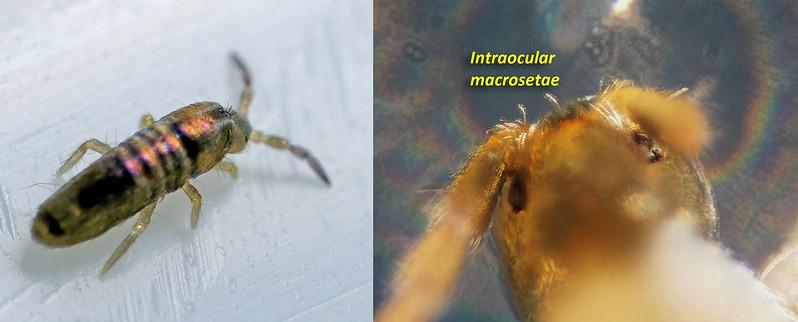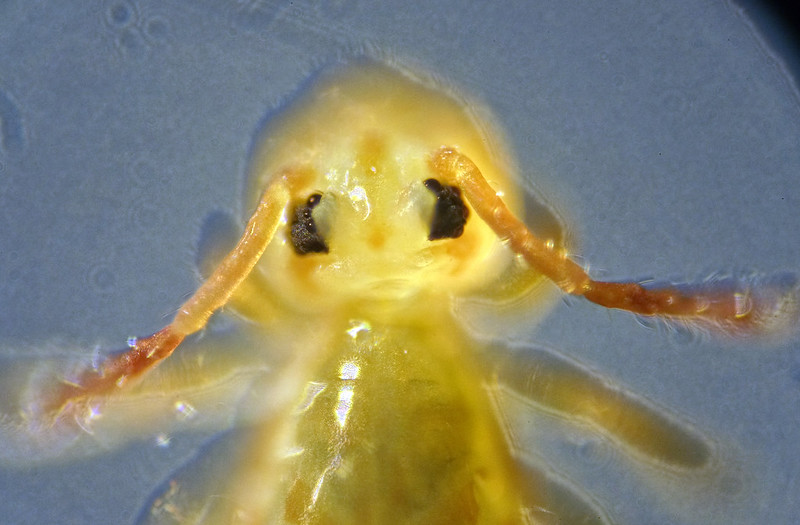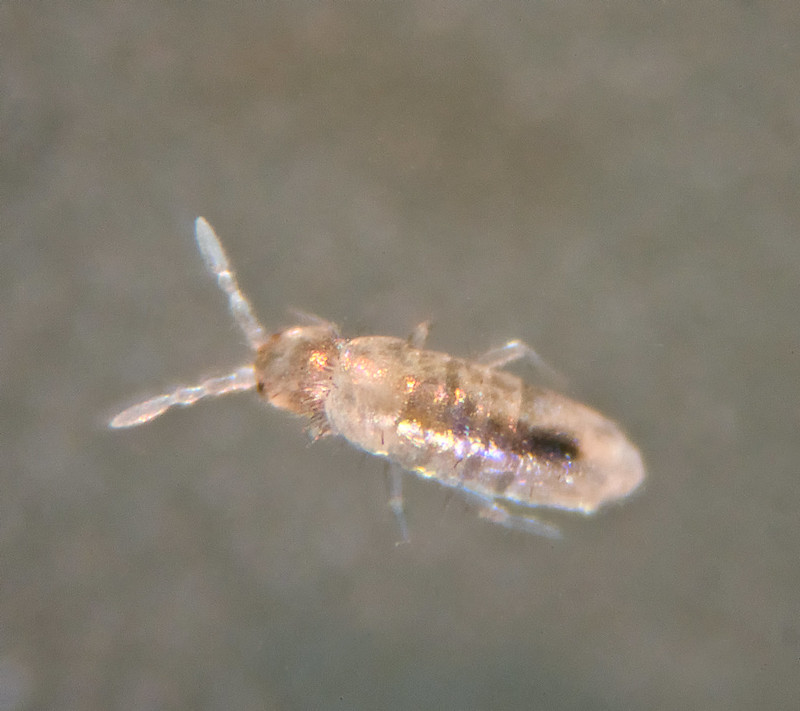After the first (mild) frost of the season I had a local trip to Narborough Bog. Because of the frost I only sampled under the trees by the river, a sheltered spot. This is one of the wettest places in Leicestershire, frequently under water for a month or more in winter when the adjacent River Soar overflows, but on this occasion, in spite of a day of light rain previously, soil under logs and sheltered from direct rainfall was still dry and powdery. Springtails were limited because of the conditions, but there were lots of
Orchesella cincta present, and quite a few
Tomocerus minor. Looking at these, several seemed to have a banded appearance. I still find it impossible to differentiate between
T. vulgaris and
T. minor by eye, so I checked them all and they all had tridentate spines on the dens, confirming that they are indeed
Tomocerus minor:










